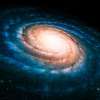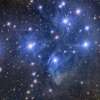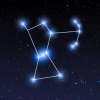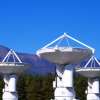NGC 7582 may appear to be a solitary barred spiral galaxy with a powerful, hidden core — but in truth, it is part of something bigger. Nestled in the Sculptor constellation, it forms a tight galaxy triplet along with NGC 7590 and NGC 7599. Together, these galaxies make up what is commonly known as the Sculptor Galaxy Triplet.
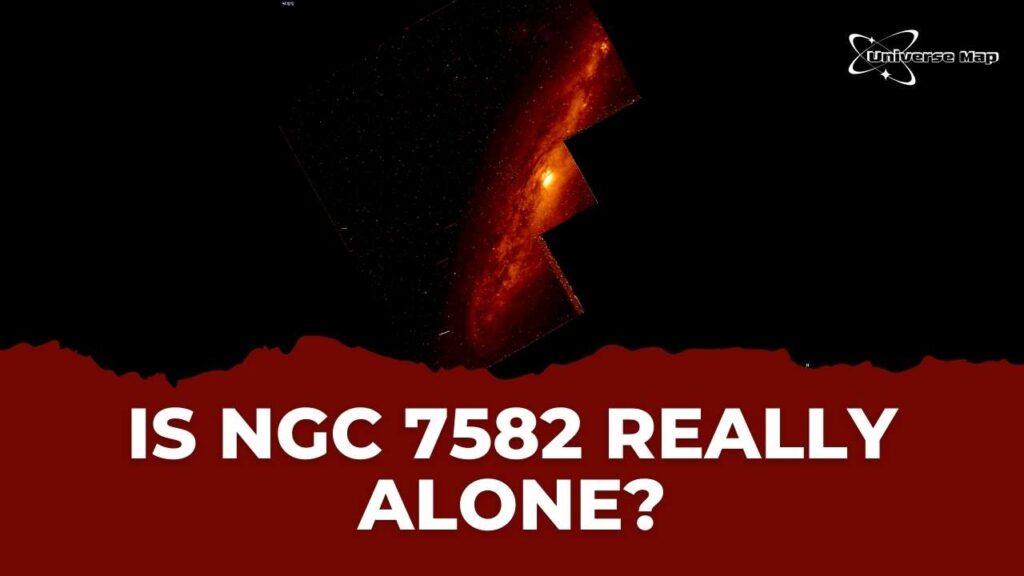
Unlike major galaxy clusters like Virgo or Fornax, this trio isn’t gravitationally bound in a dense environment. Instead, it’s a loose configuration, connected by proximity and mild gravitational interactions — enough to influence their structures, but not enough to create chaos.
So, is NGC 7582 truly evolving alone? Or are its galactic neighbors quietly shaping its destiny?
What Is the Sculptor Galaxy Triplet?
The Sculptor Triplet is an informal grouping of three galaxies located in the same region of the sky:
| Galaxy Name | Galaxy Type | Distance from Earth | Special Feature |
|---|---|---|---|
| NGC 7582 | Barred Spiral (AGN host) | ~70 million light-years | Seyfert 2 AGN, dusty core |
| NGC 7590 | Spiral Galaxy | ~75 million light-years | X-ray faint, low-luminosity nucleus |
| NGC 7599 | Spiral Galaxy | ~65 million light-years | Distorted spiral structure |
These galaxies lie within a few hundred thousand light-years of one another, forming a relatively isolated mini-group within the Sculptor constellation.
Why This Triplet Matters
While galaxy triplets are not rare, closely spaced, active spiral triplets like this one are scientifically valuable for several reasons:
- Mild gravitational interactions affect morphology without causing violent disruption
- They serve as natural laboratories for observing early-stage group evolution
- The triplet allows comparison between:
- A galaxy with an obscured AGN (NGC 7582)
- A low-activity spiral (NGC 7590)
- A morphologically disturbed spiral (NGC 7599)
Together, they give us a view of how environment influences galaxy activity, even in relatively quiet neighborhoods.
Is NGC 7582 the Dominant Member?
NGC 7582 is often considered the dominant galaxy in the Sculptor Triplet, and for good reason:
- It has the most active core, housing a Seyfert 2 AGN
- It is optically brightest and largest in angular size
- It displays complex internal dynamics due to its bar and active nucleus
But dominance doesn’t always mean independence. There’s growing evidence that its neighbors play a subtle role in its evolution — through gravitational influence, gas exchange, or group-wide dynamics.
NGC 7590 – A Quiet Spiral with a Hidden Core
Overview:
- Galaxy Type: Nearly face-on spiral
- Distance: ~75 million light-years
- Core Activity: Weak nuclear activity, possibly low-luminosity AGN
- Morphology: Symmetrical with minor asymmetries in outer arms
NGC 7590 appears optically calm but has drawn attention due to its low-level X-ray emission and soft nuclear spectrum, leading to speculation that it might host a subdued AGN or LINER-type core.
Subtle Signs of Influence:
- Its star formation is not concentrated in the nucleus but rather spread throughout the disk.
- The outer spiral arms show mild twisting, which could be evidence of gravitational torque from interactions with NGC 7582 or 7599.
- While not dynamically chaotic, it’s likely not entirely undisturbed.
NGC 7599 – A Distorted Spiral Undergoing Environmental Pressure?
Overview:
- Galaxy Type: Spiral, viewed at an intermediate angle
- Distance: ~65 million light-years
- Key Trait: Asymmetric spiral arms, warped disk
Of the three galaxies in the triplet, NGC 7599 shows the clearest signs of interaction. It features:
- One arm more extended and distorted than the other
- Possible tidal stretching, often caused by close gravitational encounters
- Regions of enhanced star formation, suggesting local gas compression
Evidence of Environmental Effects:
- The shape and kinematics of NGC 7599’s disk suggest a past fly-by or prolonged tidal influence.
- The HI gas envelope, as detected in radio observations, appears to be mildly displaced, which is a classic indicator of environmental shaping.
- It might even be feeding gas to NGC 7582 through a diffuse intergalactic stream — although that remains under investigation.
Gravitational Ties: How Close Are They, Really?
Though these galaxies are not merging, their projected distances (ranging from 300,000 to 600,000 light-years apart) put them in a range where:
- Tidal forces can gradually influence disk shapes and gas motion
- Long-range interactions can trigger asymmetry, bar strengthening, or minor inflow toward galactic centers
- A shared dark matter halo is possible, which would make their evolution loosely coupled over cosmic timescales
These signs suggest that NGC 7582 is not completely isolated — it exists in a quiet but influential gravitational neighborhood.
Galaxy Triplets as Mini-Groups: More Than Just Neighbors
While the Sculptor Triplet may not be part of a massive cluster like Coma or Virgo, it functions as a mini-group — a loosely bound system where interactions unfold gradually over billions of years.
What Defines a Mini Galaxy Group?
- Typically consists of 3–5 galaxies
- Separated by a few hundred thousand light-years
- Bound by weak gravitational interactions, often enhanced by a shared dark matter halo
- Long-term tidal influences reshape disk structures and trigger bar formation or gas inflow
In the case of NGC 7582, NGC 7590, and NGC 7599, all of these conditions appear to be satisfied — even if the interactions are subtle.
The Shared Environment: Evidence of Intergalactic Influence
1. Neutral Hydrogen Mapping (HI Data)
Radio observations suggest there may be diffuse HI gas envelopes around the group — a possible sign of:
- Tidal stripping during past close encounters
- Gas bridges forming between galaxies
- A shared intergalactic medium, albeit faint
This is particularly interesting for galaxies like NGC 7582, which have an active nucleus and may be drawing material from the outer group environment.
2. Star Formation Patterns Across the Triplet
| Galaxy | Star Formation | Possible Environmental Influence |
|---|---|---|
| NGC 7582 | Central suppressed, outer active | AGN feedback + bar-driven gas inflow |
| NGC 7590 | Disk-wide, low intensity | Undisturbed gas, possible external shaping |
| NGC 7599 | Patchy, asymmetric | Likely influenced by tidal disturbance |
When these patterns are compared, they paint a picture of differentiated evolution — driven not only by internal properties, but also by group dynamics.
3. Galaxy Evolution in Isolation vs. Environment
In isolation, galaxies like NGC 7582 might evolve more symmetrically, with smooth spiral arms and central starbursts. But in group environments:
- Bars become more prominent due to torque
- Gas inflow may fuel AGN activity
- Asymmetries and disk warps appear
- Tidal heating may quench star formation in specific regions
NGC 7582’s current state — a dusty, active, barred spiral — may thus be partly shaped by the gravitational whispers of its two neighbors.
Are They Bound for a Future Merger?
Not immediately. But if the system is gravitationally bound, as some models suggest, then:
- The galaxies may gradually move closer
- In 1–2 billion years, they could form a merged elliptical galaxy
- Or become a compact group, similar to Hickson Compact Groups (HCGs)
Such mergers are how larger structures form in the cosmic web — through small groups coalescing into more massive systems.
Final Thoughts: Alone, Yet Connected
On the surface, NGC 7582 may seem like a galaxy living its own story — a dusty spiral with a hidden powerhouse at the core. But zoom out, and we see that it’s part of a subtle, ongoing cosmic conversation with two nearby companions: NGC 7590 and NGC 7599.
Together, they form the Sculptor Galaxy Triplet — a group not defined by violence, but by gravitational suggestion. Their relationships are quiet, but deeply impactful, shaping:
- Spiral symmetry
- Star formation rates
- Gas inflows and outflows
- Potential AGN ignition
NGC 7582 isn’t truly alone — it’s evolving in response to its environment, just like galaxies in denser clusters do, only on a slower, more graceful scale.
What We Still Don’t Know
Despite decades of observation, the Sculptor Triplet leaves several fascinating questions unanswered:
1. Is There a Shared Dark Matter Halo?
- If these galaxies share a common dark matter envelope, they are gravitationally bound.
- If not, the triplet may be a transient configuration, eventually drifting apart.
Answering this would help define whether NGC 7582’s future includes mergers or further isolation.
2. Are There Hidden Intergalactic Gas Streams?
- HI surveys hint at faint gas bridges — but more sensitive data from ALMA or future radio telescopes could reveal the full picture.
- These gas flows might be fueling NGC 7582’s AGN, or influencing star formation in its neighbors.
3. How Common Are Systems Like This?
- The Sculptor Triplet may represent a common but under-studied class of galaxy groups — loose associations that reshape galaxies subtly over billions of years.
- Better statistics could inform large-scale structure formation models in simulations.
What This Triplet Teaches Us
The Sculptor Triplet demonstrates that not all galaxy evolution is driven by chaos. Sometimes, the forces shaping galaxies are:
- Gradual, like a bar growing from tidal torque
- Gentle, like a star-forming region nudged by environmental gas
- Quiet, like a black hole fed slowly by spiraling streams
And yet, the consequences are enormous — bars form, arms twist, AGNs ignite.
This system reminds us that even in seemingly peaceful corners of the universe, gravitational influence never rests.
Final Message
For amateur observers and professional astronomers alike, the Sculptor Triplet is a rich observational field. With its blend of AGN power, morphological variety, and environmental interaction, it offers a microcosm of galaxy evolution on a human-observable scale.
Whether you’re tracking gas flow, star formation, or the slow dance of gravity, NGC 7582 and its neighbors are a perfect cosmic case study — not of isolation, but of invisible connection.

